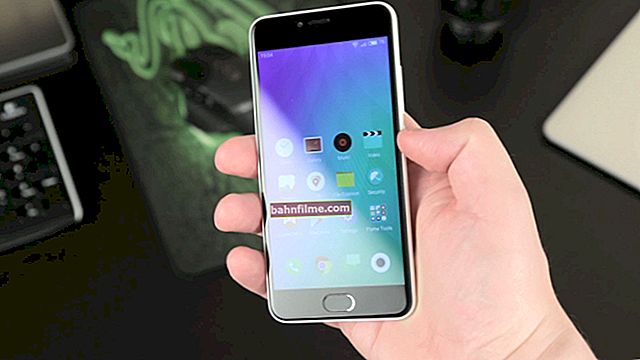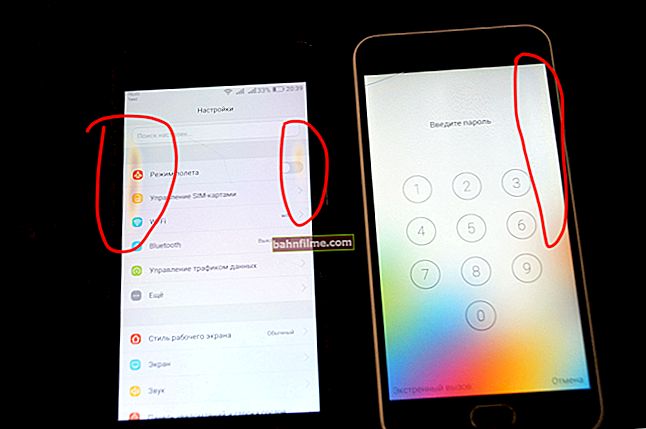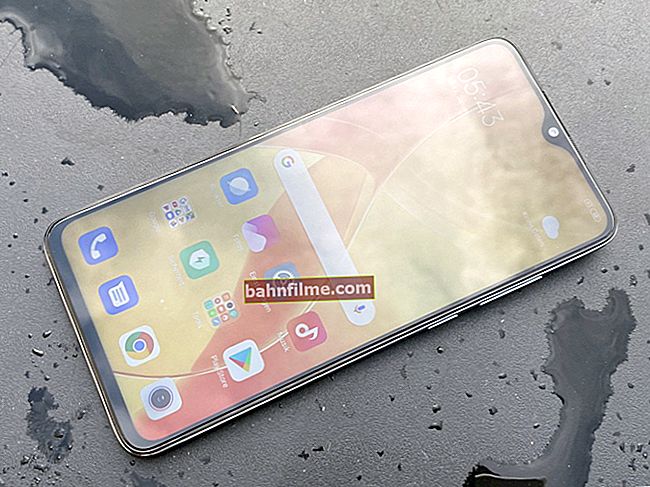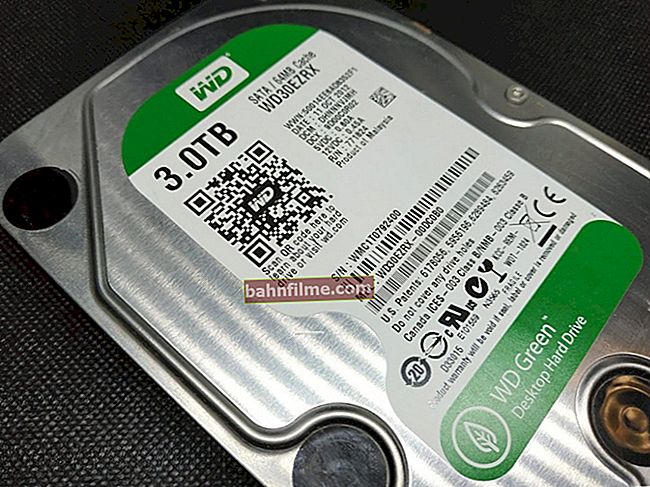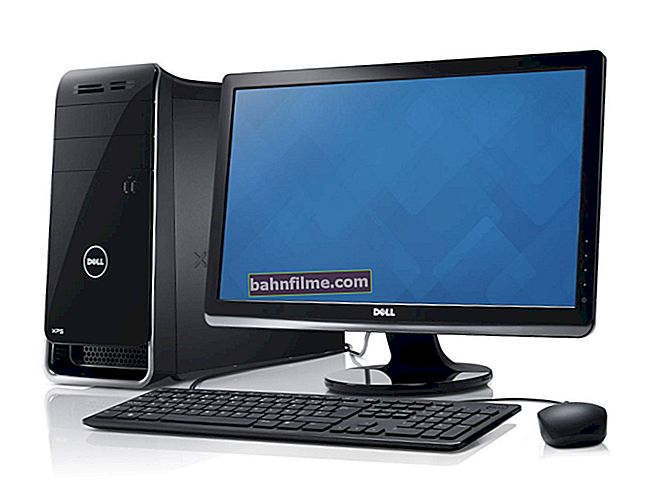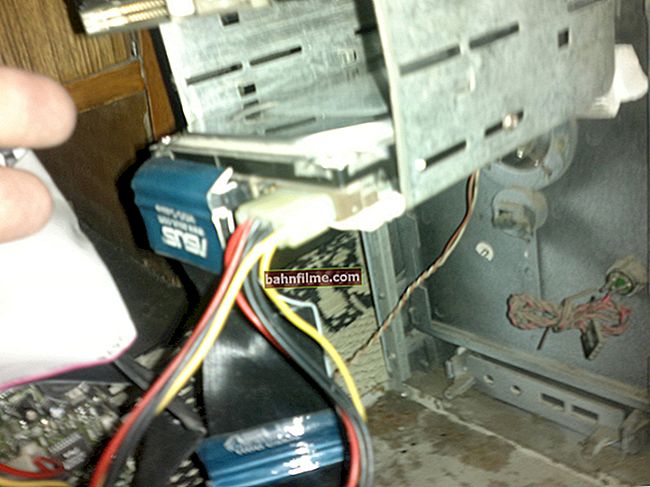
Foreword. How many people - so many opinions ... And everything that is written in this article on how to choose a laptop is just the result of my look and the look of people I know well who sell and repair such equipment.
Therefore, I took the liberty of calling the article "practice tips". In the article, I do not denigrate or whitewash specific manufacturers in any way - this is just a subjective view ... Good day! Buying a new laptop, nevertheless, is quite a tangible waste for most people, and I would very much like the purchased equipment to cope with its tasks, work for a long time and without breakdowns. In order not to regret choosing a laptop, it is highly advisable, before going to the store to buy, read the pros / cons of specific hardware and make a choice (ie go to the store to look at something concrete, not just abstract " notebook"). Otherwise, there is a risk that experienced sales consultants with their "4 cores 4 giga" will simply sell you something completely different ... So, in the article I will describe the most important points that you should pay attention to in the first place. Let's start ... 👍 By the way! If you need a solid table, cooling pad, rug and other accessories for computers and laptops, I recommend visiting the Satom.ru website. * Probably one of the most important things in choosing is deciding what tasks you need a laptop for. If for work (social networks, reading mail, working with Word, etc.) - this is one type of device, if for games - this is a completely different type. If we talk about dimensions and weight, now on sale there are both rather large devices with 17 inch screens (more than 3-4 kg, this is problematic to often carry with you), and rather compact (10-13 inch. Screen) and light ( less than 1 Kg), designed for everyday wear. I also note that due to the low weight and dimensions, performance often suffers ... And the design of laptops can be different: there is a classic type of device; there are models that can act both as a tablet and as a laptop (universal transformers). Thanks to the specials. hinges - on such laptops, the screen can be rotated as desired (see the pictures below). Classic type of laptops Laptops transformers On my own behalf, I note that all these "twists" are the weak point of such devices. Quite often, laptops from these lines with fur are repaired. damage (or the presence of backlash) just in these places. Some of the most reliable laptops are classic devices (no unnecessary screen bends). I also note on the case: a case made of aluminum alloys is usually more reliable than that of plastics (it is harder to scratch it, it heats up less, does not puncture, and is more durable). True, such devices can cost significantly more. In general, according to the choice of the device design, it is difficult to add something else, because "the taste and color ...". * Perhaps this is one of the most common questions that are asked by absolutely all buyers. Usually, after all, how - there is a certain amount of money allocated for the purchase, and I would very much like to buy the most productive device of all available for it (in general, I would recommend considering CPUs from Intel i3, i5, i7 today) . And here, the most interesting thing begins - how to evaluate the performance of this or that device behind a series of "ciphers" (for example, 1366x768, TN + film, Intel Core i3 6006U, 2x2 GHz, RAM 4 GB, HDD 500 GB, Intel HD 520, DVD -SMulti, Wi-Fi, Linux)? I will briefly decipher my example: Now about performance evaluation As an example, I decided to take two laptops from Lenovo of the mid-price category (screen below). How to evaluate which one is more productive? To begin with, always pay attention to the processor (the performance of the entire laptop as a whole depends on it). The first laptop has an Intel Core i3 7100U, the second Intel Core i5 5200U. Most, it seems to me, will decide that it is faster than i5 (well, it's i5!). In fact, there are a few more numbers and letters next to the "i3" or "i5" (generation and index) - also performance depends on them VERY significantly! Difficulties in choosing the most productive laptop Now about the comparison (in general, everything is not so simple, and the information below is simplified for simple basic comparison) There is such a site: //cpu.userbenchmark.com/ And one more: //technical.city/ They can compare the real performance of one processor with another (as well as a video card, disk, RAM, etc.). For example, I introduced both CPUs: the service shows that processors with almost the same performance (moreover, Core i3-7100U in selective synthetic tests shows an effective speed 3% -5% higher). Also, evaluating the video cards (and the presence of an SSD drive) - it turns out that the first laptop on i3 - will work a little faster and more responsive than the second one ☺. UserBenchmark Intel Core i3-7100U vs i5-5200U - performance comparison Core i5-5200U vs. i3-7100U Processor Comparison - Technical City You can also evaluate the performance of the CPU by the results of tests designed in the form of plates (you need to manually search for each of the processors in the plate and look at what place it is and what test results it shows, for example, on the screen below i5-5200U - 3361). Here are a couple of sites: Intel Core i5-5200U processor (Laptop-Center) - how many "parrots" scored (note: slang) One more example. The screenshot below shows two i5 processors (7th and 8th generation). Let's compare them ... More to the question of the difficulty of choice It turns out that according to the test results, the processors are approximately equal in performance, even more, Intel Core i5-7300HQ wins by a few percent. This is all I lead to the fact that assessing the CPU performance by "eye" for an inexperienced user in this matter is a rather difficult task (and deceptive). UserBenchmark Intel Core i5-7300HQ vs i5-8250U Here, in fact, having resorted to such simple methods - you can, even having a superficial understanding of the hardware, for an hour or two select the most productive laptops (in relation to the price). By the way, you can also read about the comparison of processors, ratings and test tables here: //ocomp.info/kak-sravnit-protsessoryi.html Important! In my examples above, the CPU performance was about the same. But in stores for the same price, they often sell laptops that have a difference in CPU performance of 30-50% (and more)! Therefore, nevertheless, go to the store to view specific models that you have estimated in advance (and already on the spot you can even check the honesty and competence of the seller ☺). * An eternal dispute, which is more than a dozen years old. It is believed that AMD is better for games, Intel is better for calculations. I still recommend choosing a CPU from Intel for a laptop, here's why: And in general, today, there are much more laptops on CPUs from Intel on sale than from AMD - making the choice easier and faster ... * On performance and its assessment - I answered in paragraph 2 of this article. In general, there are two types of video cards in laptops: integrated and discrete. Integrated - suitable for normal work: Word, Excel, surfing the browser, watching movies (even in FullHD format), etc. But it will be problematic to play games and deal with video processing. No, most of the old games should work fine, but with new ones there will be problems ... I note that if battery life is important to you, then laptops without discrete video cards work a little longer. The evaluation of the work of integrated video cards - you can look at //www.youtube.com (for each model there are videos from games with the number of FPS). Well, for example, the integrated IntelHD 5500 graphics card provides 50-60 FPS in the game World of Warcraft at a resolution of 1366x768 with settings above average. Intel HD Graphics 510 - 60 FPS in tanks in HD format Discrete is more productive. Mainly required for working with 3D graphics (games). Note that notebooks with a discrete graphics card are less reliable and durable than with an integrated one. They are also more susceptible to overheating, and are more noisy during operation. * Most users do not pay any attention to the screen at all. And they do not notice any difference until they put in front of them 2 different monitors with the same picture (just below the photo shows 2 laptops with different IPS and TN matrices). Bottom view - IPS matrix against TN In short: the quality of the picture on the screen depends on the type of matrix. Now there are quite a few matrices on sale, but the main ones are TN and IPS (among most of the rest, these are various derivatives of these). IPS matrices display colors with the best quality, moreover, if you look from the side / top / bottom, the picture will not change or worsen. True, they have a minus - not all have low response times, because of this, in fast games and dynamic scenes, you can observe fuzziness. IPS matrices are much more expensive than TN. TN (or TN + Film) - the color reproduction is worse, but they have a slow response time and are great for games. Also, if you do not really like the fact that someone from the side is looking at what you are doing on the laptop - perhaps the TN matrix will help you - the picture on the screen is distorted, and it is comfortable to look at it only for the one who works at the laptop. 👉 Remark! You can learn more about the IPS, TN (TN + film) and PLS matrix in this article. Also, monitors can be of different types of surfaces: matte and glossy. On glossy - brighter and more vibrant colors, but in it you see reflections and glare. On a glossy monitor, you can only work in a room where there is no bright light that will be reflected on the screen. 👉 Remark! You can find out more about glossy and matte surfaces here Matte and glossy surfaces of monitors * Usually, no one ever pays attention to this either. Meanwhile, after a year and a half of use (when the warranty expires), you suddenly think that it would be nice to clean it (perhaps the laptop will start to warm up). Also, you will have to "climb" into the laptop if you want to add RAM, or install / replace a disk. So, it is much more convenient to maintain those laptops on which, having removed a small protective cover, you can access the RAM, a radiator with a cooler, and disks. Simply, there are such designs of laptops in which, in order to get to the cooler, you need to completely disassemble it (sometimes you even have to remove the keyboard, etc.). In general, it is easy to damage something during assembly / disassembly (especially if you have never encountered this before). In a laptop with a convenient protective cover, you can independently blow and clean it from dust (without spending extra money on services), install / change disks or RAM. Moreover, with minimal risk of damaging something. A simple example of cleaning a laptop (Lenovo B70 line) In general, there is no tendency - some lines go in such a way that you simply do not understand which engineer and why he developed them so; others - on the contrary, 2-3 cogs, and you can contemplate everything you need. Moreover, many manufacturers have both successful lines in this regard, and not so. Another example (HP ProBook 430 line) In general, the message here is simple, I recommend that you look at the review of your laptop before buying (especially in cases where you plan to install an SSD or expand RAM over time). * In general, I hasten to disappoint that almost any equipment from any manufacturer breaks down. And I must say that in recent years (in my opinion), the quality of mid-priced laptops has dropped dramatically. Either manufacturers save money in pursuit of competitors, or because of the move of production to China, or because of something else ... However, here are some thoughts on specific manufacturers: * Here I want to note the most, in my opinion, ports that are in demand, which will definitely come in handy (but which are not in every laptop, like the same USB or HDMI). M.2 - this connector is required for connecting SSD drives (which will provide speeds several times higher than HDD). This connector is found on laptops of the mid-price category and above (as a rule, it is not in budget ones). When buying, I recommend that you pay attention to its presence. later, many users want to speed up the work of their "friend", and by installing an SSD, you can make the laptop much more responsive and faster! USB Type-C - the port is intended to replace all existing USB versions. It can be used to connect flash drives, monitors, hard drives and other devices. I also note that the port allows you to quickly charge phones (for example), and provide data transfer rates up to 10 Gbps! And yet, on laptops there are both classic microphone and headphone outputs, and headset connector. In my opinion, it doesn't matter which connector is installed on the laptop, but if you have the most ordinary (computer) headphones, and the laptop has a headset connector, you cannot connect them directly. To connect, immediately buy specials in the store. adapter. 👉 Remark! More details on this topic in the article "One headphone and microphone input in a laptop - how to connect them" * There are two types of drives in laptops: SSD (solid state drives) and HDD (classic hard drives). SSD drives are significantly faster, on average 4-5 times faster! Thanks to their installation, Windows OS can boot in 5-6 seconds! Anyway, the system starts to work much more responsive and faster. 👉 Remark! For more information on the advantages of SSD and whether it is worth switching to them - see this article. In general, in laptops, there is usually only 1 slot in which the HDD is already installed. To install an SSD, you either need to replace your HDD or buy a special one. container and install an SSD instead of a CD-ROM drive, or use the M.2 connector. 👉 Supplement! How to connect 2 disks to a laptop (HDD + HDD or HDD + SSD drive) In general, personally, I would recommend choosing laptops with an SSD drive: they are faster, weigh less, allow your device to run longer on battery power, and are not so afraid of shaking and vibration as an HDD (and a laptop is still a portable device). And the reliability of SSD drives is higher ... However, it is worth noting that laptops with SSD drives are slightly more expensive than those with HDDs. * 1) New vs used To begin with, I will say that you only need to buy a new laptop, which will have at least a year of warranty (now this is the average for the market). In general, I am an opponent of buying old used devices from strangers (since it is not known how the device was used, dropped / hit, etc., whether it was stolen and other moments). As a last resort, take it through some workshop, where they can diagnose the laptop. How to protect yourself when buying a used laptop - //ocomp.info/pokupka-bu-noutbuka.html 2) Shopping It is difficult to give a specific recommendation here (accused of advertising ☺). But in general, in general, I recommend buying a laptop in stores specializing in this technique: DNS, TechnoPoint, Citilink, Note, etc. Avoid buying in such large stores as Eldorado, M-Vidio, Domo, etc., where they sell anything for the house in a row (there are many disadvantages, but if you take it as a whole, then very often the price tags in such stores are very high, the range of choice is not so extensive, and problems with returns occur more often). 3) Remember that a laptop is a technically complex product, and you can't just change it or return it to the store (even within the first two weeks)! If you think that the laptop has problems, then within 2 weeks (after the purchase) it can be taken for diagnostics, and if the problem is confirmed, you will be refunded or exchanged the goods (in the return application, I recommend always writing that you demand to return the funds back, because there is such and such a problem (and not indicate that to replace the product with a similar one) - so, you are obliged to give an answer faster, within 10 days). After 2 weeks after purchase - in case of a problem with the device, you will simply be provided with a warranty repair. 4) Is it possible to return a laptop if you just don't like it, but everything seems to be in order with it? Quite a popular question. If a store goes to a meeting for you, then there is no problem (but, usually, most stores do not do this). Therefore, before buying, I advise you to find out in advance whether they are taking back the equipment, if suddenly after testing it turns out that it did not fit (some have a special guarantee for extended service for a fee, and there is such a service there). Now about how to return the laptop if the store is against it (the sellers will forgive me ☺). Firstly, you need to do this in the first two weeks after purchase (it is possible to do this afterwards, but much more difficult, only in case of already very serious problems with the device). Secondly, you must keep all documents, box, receipts, stickers, etc. the device should look the same as it did after purchase. Thirdly, I will say right away that you can find something to complain about with 9/10 devices in the mid-price category: Further in the store, write an application for the return of the goods, with a request to return all funds for the purchase in full (exactly the funds!), Due to the fact that, for example, the device works less time than in the description of the goods, and for you this is an essential characteristic goods. In general, it is rather difficult to refute this fact. (all the more, the batteries are in fact often hooked up and already have a certain "wear and tear") , and most stores meet you (no one needs conflicts and courts (and you can still appeal to the protection of consumer rights, and other instances, complicating the life of the store. So now everything can be done online) ). * * Add-ons are welcome ... Good luck with choosing your device! 👣 First publication: 01/24/2018 Correction: 02/10/2020 Choosing a laptop: 10 important points
❶ Type and design laptop. What to choose?


❷ How to evaluate the performance of a processor, video cards






❸ AMD or Intel. what it is better and more reliable
❹ About the video card: what are there, which is more reliable

❺ Screen: IPS vs TN, matte or glossy. When and which one to choose




❻ About assembling / disassembling a laptop


❼ About manufacturers: HP, Dell, ASUS, Lenovo, Acer, etc. Which breaks less
❽ About the necessary connectors: M.2, USB Type-C, microphone / headphones

❾ About drives: HDD, SSD

❿ Where to buy and how to return a laptop back (and is it possible ...)
RESULTS (BRIEF ABSTRACTS)


